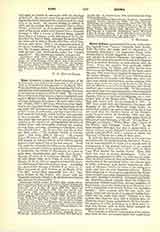

Kiowa Indians (pronounced Kai-o-wa, Latin spelling, Spanish form: Caygua; Comanche form: Kaiwa, from Ka-i-gwu, the name used by themselves, of uncertain etymology). An important Plains tribe, constituting a distinct linguistic stock, the Kiowan, now located in western Oklahoma, but formerly residing in the mountains about the heads of the Missouri River, in western Montana, in close alliance with the Crows. From this position they gradually drifted southward along the Plains, and after having been driven from the Black Hills region by the Sioux about the year 1800, made their principal headquarters upon the upper Arkansas. About the year 1790 they made peace with the Comanche, with whom they have ever since been closely confederated, and in company with whom they made constant raids far down into Texas and old Mexico, even as far as Zacatecas, until finally confined upon a reservation in 1869. In this southern movement they were accompanied by a small detached tribe of Athapascan stock, commonly known as Kiowa-Apache, who, in everything but language, are a component part of the Kiowa tribe. The Kiowa made their first treaty with the Government in 1837. In 1867 they joined with the Comanche, Cheyenne, and Arapaho in the noted Medicine Lodge treaty, by which they agreed to go upon a reservation, but it was not until after the decisive battle of the Washita, under General Custer, November 27, 1868, that they fulfilled their promise. Among their noted chiefs of this period were Setangya, or Satank, “Sitting Bear”, Settainti or Satanta, “White Bear”, the “orator of the Plains”, and Gui-pago, “Lone Wolf”. In the later troubles Setangya was shot to pieces while resisting military arrest, Settainti committed suicide in prison, and Lone Wolf, with a number of others, was deported to Florida for a term of three years.
In 1873 the first educational work in the tribe was undertaken by the Quaker teacher, Thomas C. Battey, but he was compelled to desist a few months later in consequence of the general outbreak of the confederated southern Plains tribes (1874-1875), in which Lone Wolf headed the hostile Kiowa. Since then there has been no serious disturbance. Under an agreement negotiated in 1892, but held up and essentially modified before its final ratification in 1900, the reservation of the associated tribes was thrown open to white settlement, each Indian receiving an allotment of 160 acres, besides his share of the selling proceeds, and they are now American citizens. Before their subjection to reservation restrictions the Kiowa were a typical equestrian Plains tribe, living in buffalo-skin tipis, dressing in buckskin, with paint and feathers, depending almost entirely upon the buffalo for subsistence, without agriculture, pottery, basketry, or fixed abode, constantly raiding in every direction, and with a reputation even among Indians for turbulent ferocity. Their weapons were the bow, lance, and shield, which last was made of toughened buffalo hide. There was no single head chief. Instead of a clan system (see Indians) they had a division into six (formerly seven) bands, including the Kiowa-Apache. On occasion of tribal gatherings, as at their great annual Sun Dance, each of these bands occupied an appointed place in the camp circle.
They had also a military organization of six orders, each with its own ceremonial dance and regulations, together with an heraldic system based upon the shield and tipi. Their principal deities were the Sun, the Buffalo, the Peyote plant, and the tribal palladium, the sacred Taime image, exposed to view only at the sun dance. Polygamy existed, marriage was simple, and divorce as easy. The dead were buried in the ground or in rock caves. The property of the deceased, including dogs and horses, was destroyed near the grave. The relatives, particularly the women, cut off their hair, gashed themselves with knives, chopped off portions of their fingers, wailed day and night for weeks, changed their names, and even dropped from the language for a time any word that might suggest the name of the dead. The same custom was noted by the Jesuit Dobrizhoffer among the Abipone of Argentina one hundred and fifty years ago. They named years by consecutive sun dances, and preserved a chronological pictograph record going back to 1833. They are now nearly all in houses, wearing citizen’s dress, largely Christianized, and making some effort at farming, but depending more upon the income from their rented lands and treaty funds. With the exception of some songs and a vocabulary by Mooney, very little has yet been published of their language, which is strongly nasal and explosive, but sonorous, and comparatively simple in grammar. From perhaps 1800 souls in 1800, they number now about 1270, besides 160 Kiowa-Apache. After Battey, the first missionary work in the tribe was begun in 1887 by the Methodists, followed by the Presbyterians, Baptists, and Catholics. The Methodists have since withdrawn, and the Presbyterian work is now limited to the Apache. The Catholic mission of St. Patrick, at Anadarko, the agency center, was begun in 1891 through the assistance of Mother Catherine Drexel, and is now in flourishing condition under the Benedictine Fathers assisted by Franciscan Sisters, with over 400 communicants in the associated tribes.
JAMES MOONEY

